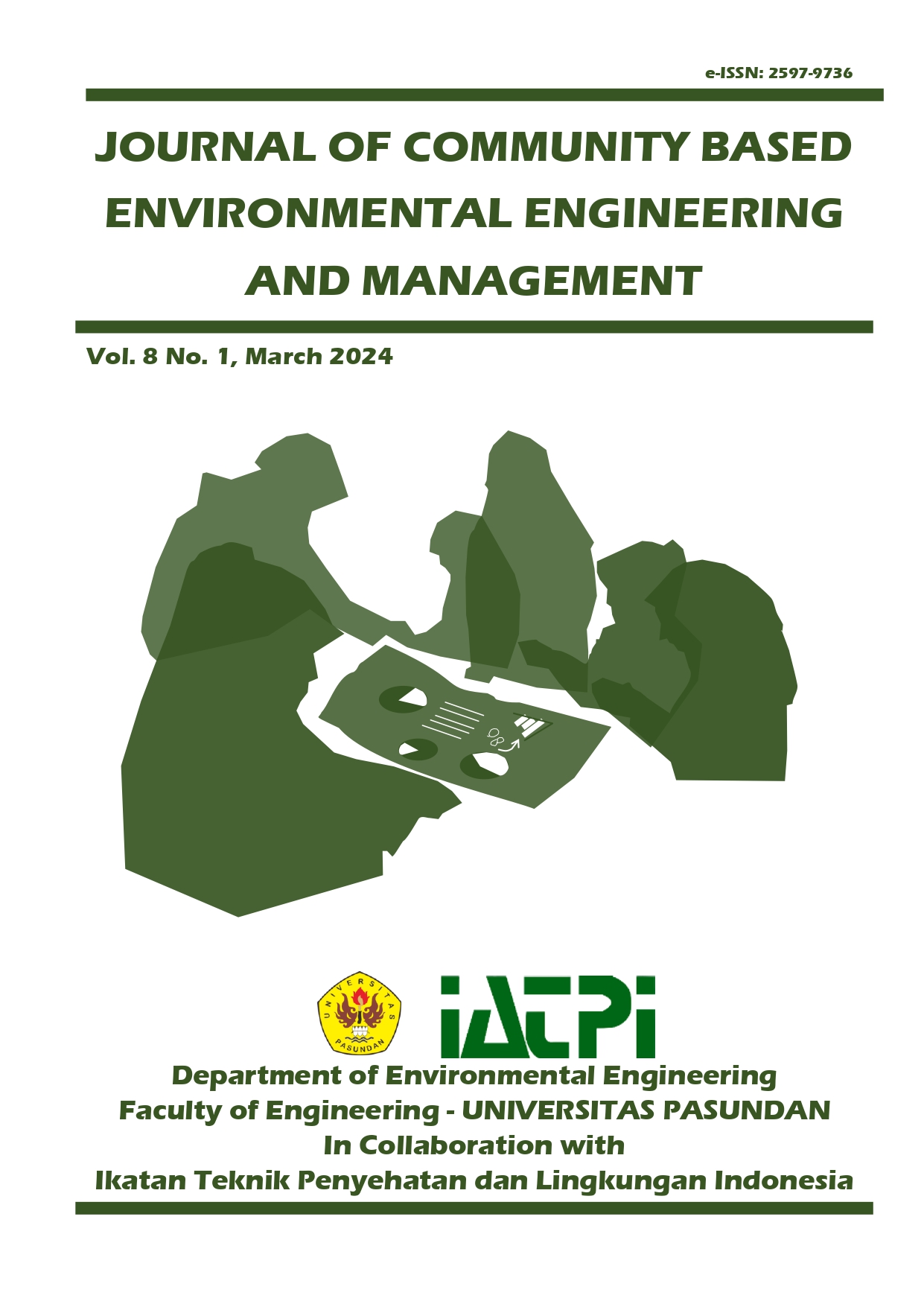Greenhouse Gasses Inventory on Textile Finishing Industry PT X
DOI:
https://doi.org/10.23969/jcbeem.v8i1.10442Keywords:
emission inventory, greenhouse gasses, mitigation, textile finishing industryAbstract
The textile industry has the biggest impact on environmental pollution in the world, and is responsible for 10% of global carbon production. Most of the waste in the textile industry, is generated from the dyeing process and textile processing. PT X is a textile finishing industry, that focuses on finishing processes like dyeing and textile processing. In this research, GHG (greenhouse gasses) emission inventory was carried out to see how much GHG generated in the textile finishing industry. The inventory will focus on CO2, CH4, and N2O from generator, curing machine, operational vehicle, and electricity usage. The inventory methodology was based on IPCC 2006, that stated to determine GHG emission, an activity data and emission factor from that source is needed. This emission inventory results on the total emissions of 666.38 tonCO2eq or 258.629 kgCO2eq/tonproduct GHG emission from PT X in 2021. The GHG emission in PT X are dominated by CO2 gas. Which most of comes from electricity usage source. GHG emission produce by PT X are not high compared with similar industries, but can be improved further more with mitigation measures such as installing a solar panel, and constructed wetland.
Downloads
References
Adriansyah, A. A. (2017). Keterkaitan antara Sanitasi Pondok Pesantren dengan Kejadian Penyakit yang Dialami Santri di Pondok Pesantren Sunan Drajat. Medical Technology and Public Health Journal, Vol 01 No 01: 4-13 .
Dewarani, S. (2019, Desember 10). Mengenal Lebih Dekat Gas Rumah Kaca | Dinas Lingkungan Hidup dan Kehutanan DIY. Dipetik Mei 15, 2022, dari Dlhk.jogjaprov.go.id: https://dlhk.jogjaprov.go.id/mengenal-lebih-dekat-gas-rumah-kaca
Garg, A., & Tinus, P. (2006). 2006 IPCC Guidelines for National Greenhouse Gas Inventories, Volume 2: Energy. Jepang: Institute for Global Environtmental Strategies.
Houghton, J. (2005). Global Warming. United Kingdom: IOP Publishing Ltd.
Menteri Lingkungan Hidup Republik Indonesia. (1999). Indonesia: The First National Communication on Climate Change Convention. Jakarta: Kementerian Lingkungan Hidup Republik Indonesia.
Murugesh, K. B., & Selvadass, M. (2013). Life Cycle Assessment for the Dyeing and Finishing Process of Organic Cotton Knitted Fabrics. Journal of Textile and Apparel, Technology and Management, 1-16.
Pipatti, R., & Vieira, S. M. (2006). 2006 IPCC Guidelines for National Greenhouse Gas Inventories, Volume 5: Waste. Jepang: Institute for Global Environtmental Strategies.
Pradana, M., & Reventiary, A. (2016). Pengaruh Atribut Produk terhadap Keputusan Pembelian Sepatu Merek Customade (Studi di Merek Dagang Customade Indonesia). Jurnal Manajemen, Vol.6 No. 1: 1-10.
Ranganathan, J. e. (2015). The Greenhouse Gas Protocol. World Business Council for Sustainable Development; World Resources Institute.
Rusbiantoro, D. (2008). Global Warming for Beginner: Pengantar Komprehensif Tentang Pemanasan Global. Yogyakarta: O2.
Sidhi, A. N., Raharjo, M., & Dewant, N. A. (2016). Hubungan Kualitas Sanitasi Lingkungan dan Bakteriologis Air Bersih terhadap Kejadian Diare pada Balita di Wilayah Kerja Puskesmas Adiwerna Kabupaten Tegal. Jurnal Kesehatan Masyarakat , Vol 4, No 3: 665-676.
Triana, V. (2008). PEMANASAN GLOBAL. Padang: Universitas Andalas.
United States Environmental Protection Agency. (2022, Mei 5). Understanding Global Warming Potentials. Retrieved from epa.gov: https://www.epa.gov/ghgemissions/understanding-global-warming-potentials














